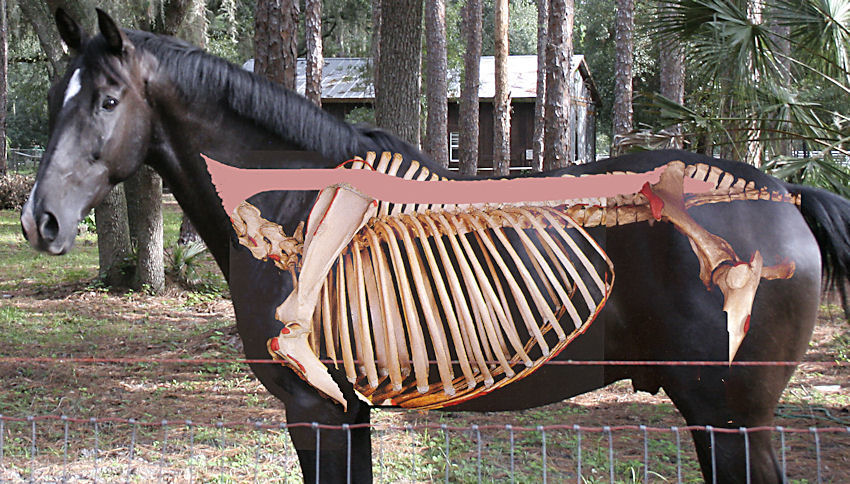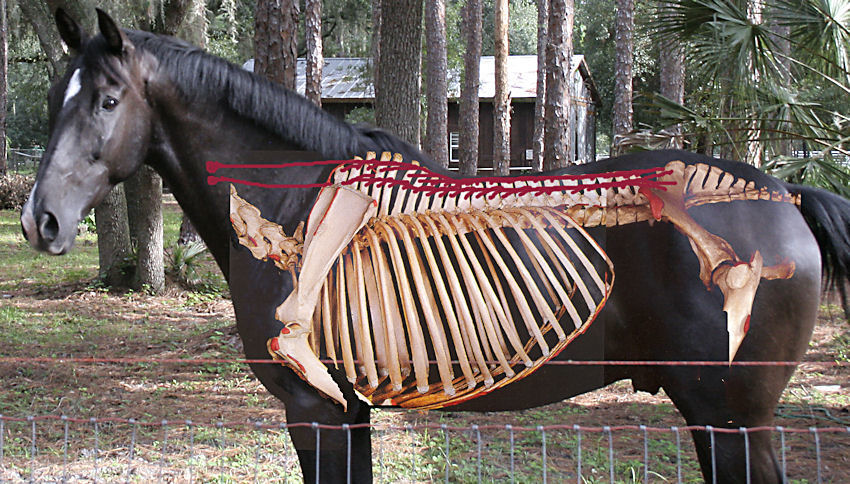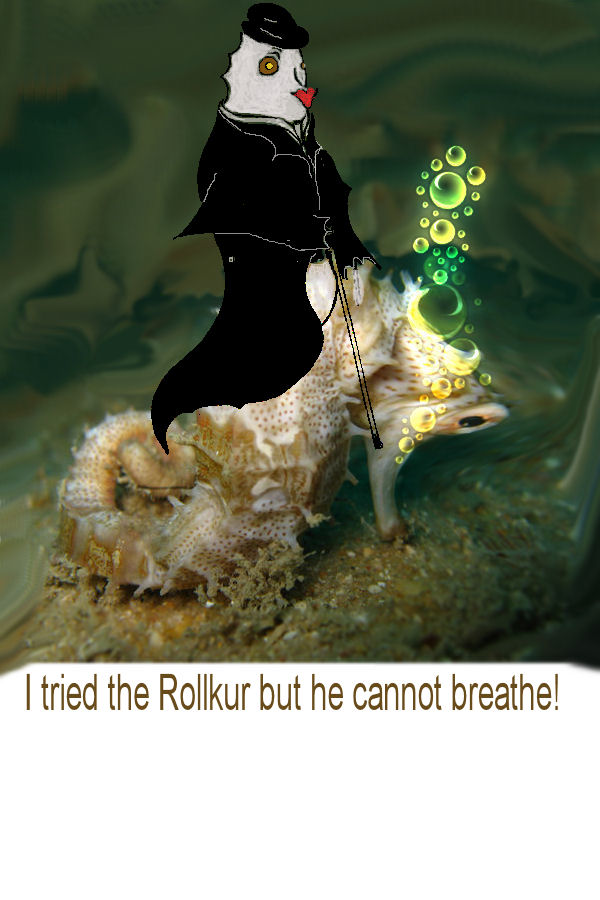 |
|
 |
| Drowning The Fish |
| Newsletter Science Of Motion |
September 2008 | |
|
Greetings!
Introduction to the Science of Motion
Anyone introduced to the science of motion enjoys a new quality of life with the horse, is able to perform at levels previously out of reach, and watches the horse's "lameness bill" dropping to virtually no expense. With great enthusiasm, one wants to share with others the fascinating journey but the explanation does not come easily.
It is not that the scientific aspect is heavy. In fact the science is clearly explained and easy to understand. The greatest difference is the kindness to the horse. The equestrian education emphasizes submission. Horses are submitted to a system and failure to perform or lameness is attributed to the horse's poor genetic or bad attitude. In reality, they are many "not good enough" horses who are very good but have their talent downgraded by muscles imbalance, morphological flaws or other defect that submissive techniques attempt to manage but are unable to resolve.
The science of motion is about addressing and correcting the muscles imbalance or the source of the abnormality. It is not done submitting the horse to another system but rather engaging the rider as well as the horse's intelligence. It is a partnership where the rider's knowledge and the horse's mental processing reach a level of body control that opens performances previously inaccessible and the capacity to perform at the horse's fullest potential while remaining sound.
Listening to numerous requests, I decided to provide this "explanation." "What is the Science of Motion" is the long due reference that anyone already engaged in this new perspective expected. For everyone hoping to further their riding skill and their horses' talent, the unprecedented quality of the illustrations and simple clarity of the text elevates
What is the Science of Motion
as the greatest learning materiel ever made available.
Sincerely,
Jean Luc Cornille
 |
|
|
Why Drowning The Fish?
When public figures would rather cloud the issue, they multiply irrelevant and confusing statements. In French politic, the tactic is referred to as "noyer le poisson," (drowning the fish.)
When it comes to the practical application of scientific knowledge, the equestrian education is "drowning the fish." Often, the confusion is greater at the conclusion than the introduction of the scientific paper. The ambiguity is not related to the study but rather the practical application which attempts to integrate pertinent discoveries into traditional beliefs.
The truth is that in multiple instances, advanced technologies and intelligent studies question fundamental values. The newsletter is about questioning traditional values in the light of recent scientific discoveries. Doing so, we are furthering the spirit of the equestrian tradition that places the horses' health and performances above the cult of history.
"Respect for tradition should not exclude the love of progress". (Colonel Danloux, 1931) |
|
|
|
Here are excerpts from the CD/Book What is the Science of Motion Jean Luc Cornille
 The biomechanics of the vertebral column, although very complex are of vital importance because they form the basis of all the body's movements." (Leo B. Jeffcott, 1980) Equestrian education and veterinary approaches regard the horse's vertebral column as secondary to the legs. Principles of riding emphasize flexing the horse spine through greater engagement of the hind legs and/or lowering of the neck. In the line of thought that back soreness is only the compensation for hock pain, equine practitioners are treating back pain injecting the hocks. We explored the notion that the horse's vertebral column was indeed the source of all the body's movements. Greater forward transmission of the horizontal forces is achieved increasing the rigidity of the vertebral column. The fascicles of the main back muscles that bridge three to five vertebrae are set into mirror image direction (Black Arrows). Their simultaneous contraction presses the vertebrae against each other (Clear Arrows). The same muscular work is reproduced at the level of each vertebra. The mechanism explains why the back muscles stiffen to increase the speed, and vice versa, increasing the speed stiffens the back muscles. (CLICK IMAGE TO ENLARGE) |
Click Image to enlarge
 At first, the explanation does not translate easily in one's mind since the back muscles are simplistically illustrated as long bungee cords stretched horizontally along the vertebral linkage. Such illustration is of the Longissimus dorsi muscles group is overly simplistic and leads to drastic misconceptions.
|
 In reality the Longissimus dorsi group is made of a large number of relatively small segments (fascicles) and is composed of two divisions. The dorsal division is illustrated on this diagram with the upper red line. The ventral division is illustrated with the lower red line. |
|
Set in mirror image direction are the fascicles of the spinaleus system (in green on the illustration,) which bridge two or more vertebrae.
Acting in perfect synchronization, longissimus and spinaleus muscles are creating vertical forces resisting the attraction of gravity. Duplicated along the whole thoracolumbar column, this muscular work is creating longitudinal flexion of the spine.
(Click on image to enlarge)
|
|
When the rider tilts the pelvis shifting the seat bones forward, as emphasized in the driving seat, early contraction of the longissimus muscles occur stimulating extension of the cranial thoracic spine, (white arrow.) (click image to enlarge)
|
|
Conversely, when the rider is arching the lumbar vertebrae excessively, the body weight is acting front to back inducing extension of the horse's caudal thoracic and lumbar spine.
(Click on image to enlarge)
.
|
|
Equine Humor
Jean Luc Cornille
 Sense of humor: During his military career, Jean Luc totalized 324 days of house arrest. Almost all because of his unstoppable sense of humor. This did not cure him. He just could not resist. Each time an event presents itself, Jean Luc immediately sees the funny angle. For instance, when the first advertising about the pre-shaped heel down riding boots came out, here is what crossed Jean Luc's mind. Sense of humor: During his military career, Jean Luc totalized 324 days of house arrest. Almost all because of his unstoppable sense of humor. This did not cure him. He just could not resist. Each time an event presents itself, Jean Luc immediately sees the funny angle. For instance, when the first advertising about the pre-shaped heel down riding boots came out, here is what crossed Jean Luc's mind.
At first I walked funny with my new Heel Down riding booths.
Then I found Toes Up and it changed my life.
(Available on coffee cups)
|
|
I asked Jean Luc for a Logo for our newlsetter Drowning the Fish
this is what he came up with!!!..;)

.
(Available on cards)
|
|
Carousel Horses
Even the carousel horses stimulate his mind. "Carousel horses" is a series where each equestrian speciatly is illustrated. The series is avaiable as polo shirts and greeting cards. Email for information. mailto:helyn@scienceofmotion.com

And Now Let Him Stretch! |
|
Equistrian Art Helyn Broadhurst
 "For The Love". "For The Love".
14 x 11 Unframed On Canvas
$175.00 Plus Shipping |
|
|
|
|
|
| Join Our Drowning The Fish Newsletter! |
|
We hope you have enjoyed our first newsletter. The Cd /Book What is the Science of Motion (Part 1) is a unique combination between training experience at all levels include the preperation of olympic horses and pratical application of advanced scientific studies. The book is available on Science of Motion website if you would rather you may also mail a check to 4785 47th Street, Sarasota, Florida 34235. Feel free to share this with your friends. In a few months we will also add an Equine forum with Jean Luc so stay tuned for updates! If you have any questions or suggestions we would love to hear from you.
Kind regards,
Helyn and Jean Luc |
|
|
|
|
|